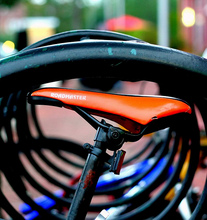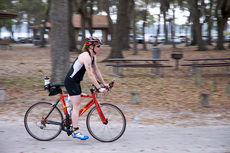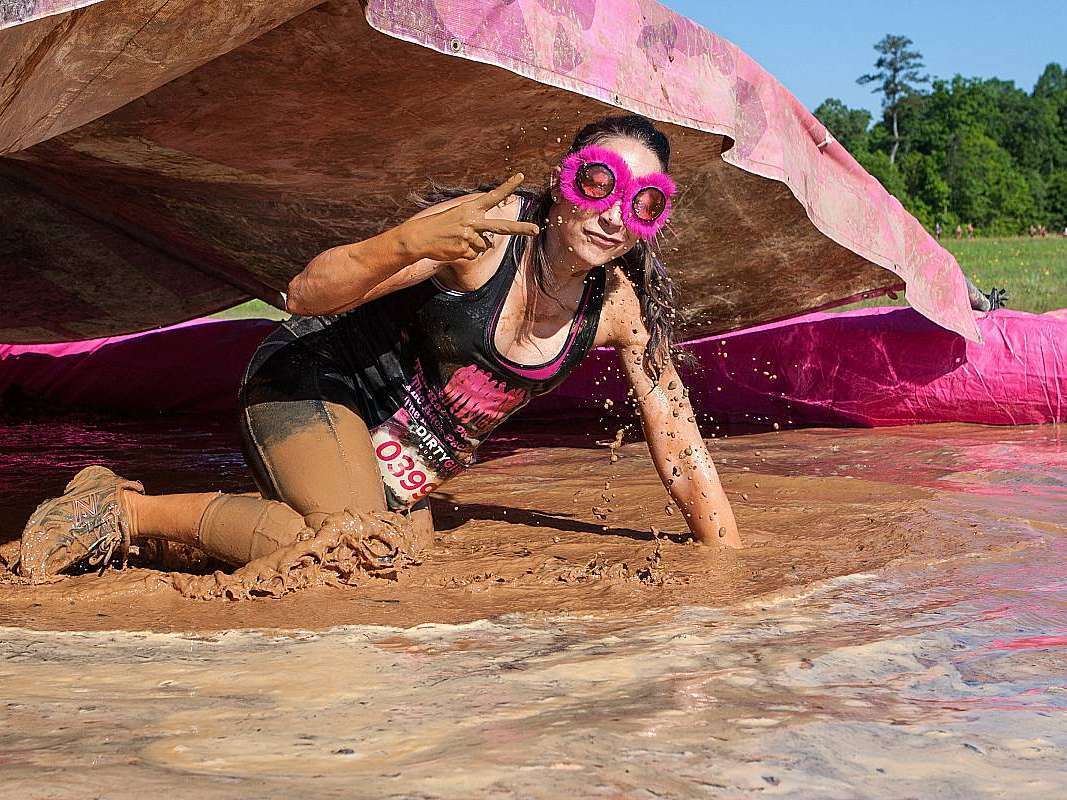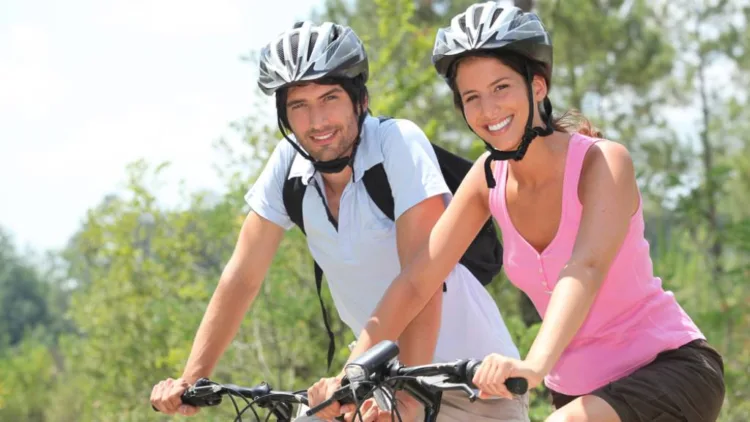 Maybe you’ve never given much thought to your bike seat.
Maybe you’ve never given much thought to your bike seat.
People invest a lot of time determining the brand of bike to purchase, the correct bike fit, the bike’s components, and the right tires.
A new bike obviously comes with a seat, yet typically people don’t really question or investigate whether their bike bike seat is the best bike seat for them. Mistake!
Triathlons & Training = A Lot Of Seat Time
In the sport of triathlon, the biking mileage is the longest compared to the swimming and running portions. For example, in a full Ironman triathlon, you bike 112 miles.
Because the biking portion is the most significant, a triathlete spends a lot of hours and logs a lot of mileage training on his or her bike. This means a lot of time sitting on your rear end.
As I began increasing the mileage on my training rides, I noticed that it wasn’t so much my legs that were aching, but my neck, wrists, lower back, and butt. The right bike seat can make a huge difference in your training for and competing in triathlons.
Bike Seats vs Bike Saddles
In the cycling world, bike seats are referred to as bike saddles.
A “seat” is technically something you sit on, bearing your entire weight. A saddle is different because it is intended to carry some, but not all of your weight. The rest of your weight is carried by your legs, as well as your hands and arms.
A Word About Bike Seat Soreness…
If you are new to cycling, or you are just getting back into it after a significant time off, you will be sore at first regardless of what seat you have. What happens is that you will take your bike out for a ride and at first you will ride strong. But because you are not yet in good cycling shape your legs will tire, and you’ll sit harder on the saddle, and that’s when the soreness will set in.
So, be aware that a lot of saddle complaints from a newbie or returning cyclist may mainly be a result of fatigue. Push through the initial soreness phase, and then evaluate the comfort level of your seat. Newbies sometimes think that the perfect bike seat will prevent any soreness. Won’t happen; it’s just part of it.
So how do you determine which bike seat will be the most comfortable?
Soft Bike Seats
Some people might assume the most comfortable bike seat is the “softest” one but this is not necessarily true.
Compare it to a bed mattress. For me, the softer the mattress, the worse it is for me in terms of comfort level. A harder or firmer mattress is more comfortable for me.
Many saddles are made to appeal to an inexperienced cyclist who would evaluate a bike seat by how easily they can push their thumb into the squishy top. That kind of saddle is comfortable if all you are doing is biking 1or 2 miles, but if you are biking over 5 or 10 miles, you’re in trouble. Saddles with excessive padding are often the common cause of painful chafing of the inner thigh, as rides become longer.
Narrow Bike Seats
 The width of the saddle is a critical factor in determining the best bike seat for you.
The width of the saddle is a critical factor in determining the best bike seat for you.
When cycling, your weight is concentrated on your two “sit bones,” known technically as your “ischial tuberosities.” These parts of your body are designed to bear your seated weight, and saddle-related discomfort normally arises because the load is carried on the soft tissues between your sit bones.
A saddle that is too narrow will cause those sit bones to hang over the sides, forcing the soft tissues to bear the load. If the saddle is too wide, it is likely to cause chafing of the inner thigh.
Expect to hear a lot about gel bike seats, which are touted as the cure-all for saddle soreness. This “gel” is a closed-cell foam, in which the air bubbles are at higher than normal pressure. But buyers beware, a lot of cyclists say it’s basically hype, and has no correlation to how comfortable your saddle is.
The faster you ride, the more likely it is you’ll want a narrow, racing-style seat. This is because a fast-riding position on a bike shifts you forward, placing more weight on the hands and feet and reducing a lot of the weight on the seat. Also, as you pedal more vigorously, you spin faster and you can’t tolerate interference from the sides of the seat. However, keep in mind that the longer-distance triathlons are less about speed and more about endurance. You don’t “race” 112 miles, you successfully endure it.
Bike Seat Position
In general, the saddle should be nearly level.
A common mistake made by people suffering from crotch-area, hand or arm pain is to tilt the nose down. But by doing this, the saddle acts as a ramp, causing the “sit bones” to slide down and forward, placing more pressure on the hands. Pressure should be distributed evenly throughout both sit bones and crotch bone, and this is usually obtained with the saddle at least horizontal, if not slightly “nose up” from horizontal.
Men’s vs Women’s Bike Seats
 Most high-performance bikes have saddles designed for men, not for women. Due to the wider pelvis of most women, this can result in the sit bones overhanging a narrow saddle, leading to painful pressure on soft tissues. In general, women’s saddles are somewhat wider and somewhat shorter than those that work best for men.
Most high-performance bikes have saddles designed for men, not for women. Due to the wider pelvis of most women, this can result in the sit bones overhanging a narrow saddle, leading to painful pressure on soft tissues. In general, women’s saddles are somewhat wider and somewhat shorter than those that work best for men.
While not all women require a female-specific saddle design, many do. Women sometimes do fine on men’s saddles but it’s a good idea for a woman to start a woman’s saddle. The typical man’s saddle is a bit longer and narrower, while the women’s saddle is a bit shorter and wider.
For a woman, tilting the saddle down in front may reduce acute saddle pain, but creates a tendency to slide forward. This sliding must be resisted by pushing backward on the handlebars, which can result in sore hands, wrists, shoulders or neck! Some newer women’s saddles have a large cutout in the middle to eliminate pressure on soft tissues. These work well for many women, but some cyclists find the sharp-ish edges of the hole irritating.
Types Of Bike Seats
When purchasing a bike seat, you will notice there are hundreds to choose from. All of them more or less fit into 8 broad categories:
- Race bike seats (common triathlon saddle)
- Mountain bike seats (off-road saddle)
- Gel bike seats (because other seats cause irritation)
- Suspension bike seats (hybrid seat for on and off road cycling)
- Cutaway bike seats (because other seats cause numbness)
- Wide-cushion bike seats (leisurely, upright biking)
- Leather bike seats (you’re a traditionalist)
- Alternative bike seats (if you’ve had prostrate surgery or significant groin injury).
There is some crossover between the types. For example, you can purchase a gel mountain bike saddle.
You’re going to have to experiment and see what works best for you.
Are You Riding With The Right Bike Saddle?
How To Prevent Saddle Sores
 Here are some saddle soreness prevention measures:
Here are some saddle soreness prevention measures:
1. Keep riding. The more you ride, the quicker you will move through that newbie saddle soreness phase.
2. Use cycling shorts. Cycling shorts have pads. Get a few pairs.
3. Do lube. Normally, you apply the lube directly onto the seat pads themselves. Ideally, lube your cycling shorts a couple hours before your ride so the lube soaks into the pads.



